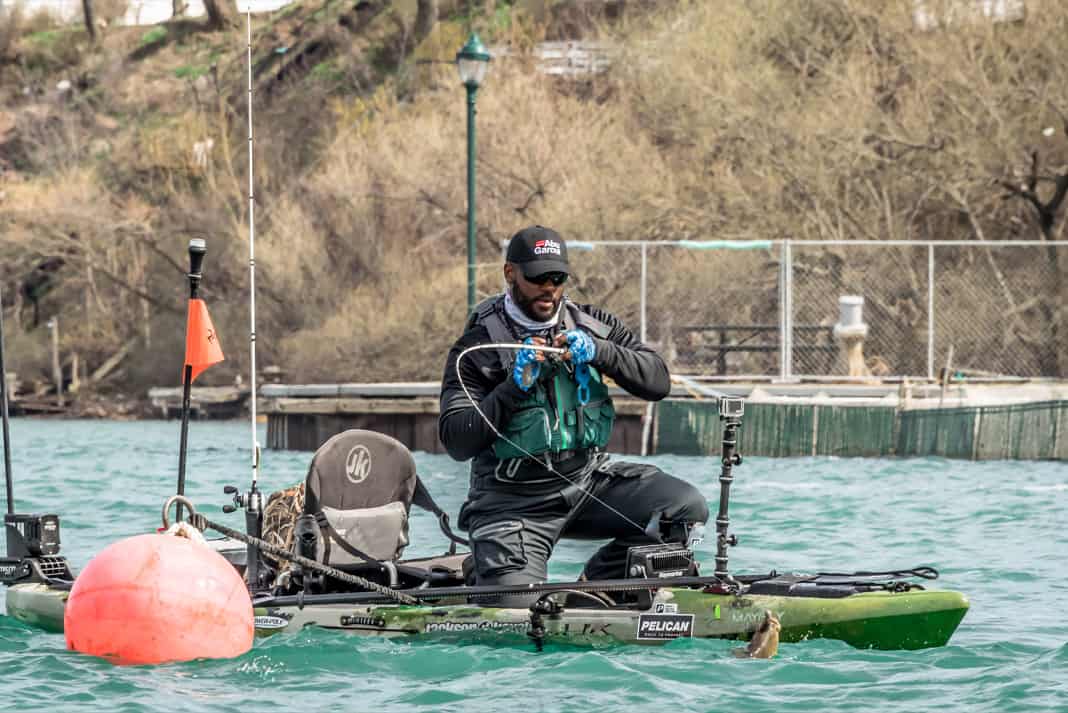Products You May Like
With the advancements in pedals and motors, it seems no one is paddling a kayak anymore. My friends at the paddle shop report customers come in with a preconceived notion that pedalling is more advanced than paddling. People seem to believe pedalling is for “serious” anglers. Truth is, according to a Kayak Angler reader poll, nearly twice as many anglers still get around with two blades and a shaft. Many fishing newbies come to the sport in a paddle boat. And the simple system still rules shallows and river fishing. In fact, many pros looking for an easier approach to the water are turning in their pedals and returning to their roots. We interviewed six anglers who could pedal but choose to paddle. After reading their stories, you’ll want to join them.
Meet the Paddle Anglers
John S. Deshauteurs
Vancleave, Mississippi // Largemouth Bass
From his roots in coastal Mississippi, John Deshauteurs (JD) is a rising media star. The Werner Paddles pro is a contributor to web and television outlets and a regular on the tournament scene. Deshauteurs pedals when he’s on a mission to pick apart a new lake, but much of his fishing is paddle powered.
Bart Swab
St. Augustine, Florida // Snook, Redfish, Speckled Trout
Bart Swab (BS) is professional guide and owner of Action Kayak Adventures in Florida’s famously swampy northeast corner. Swab chooses a pedal kayak when he’s fishing the ocean and inlets, but when it comes to backwater fishing, he’s all about the paddle. “Every serious angler should have a pedal and a paddle kayak,” he says.
Richie Bekolay
Navarre, Florida // Redfish, Speckled Trout, Red Snapper, King Mackerel, Mahi-mahi
Tournament angler, blogger and Old Town pro, Richie Bekolay’s (RB) true love lies in his origins paddling his mom’s canoe. “Since then it’s been full steam ahead,” Bekolay laughs. From the mid-Atlantic to Florida’s west coast, Bekolay paddles freshwater and salt. The pro angler admits pedalling has its place, but paddling offers a no-maintenance, go-anywhere approach that never loses its charm.
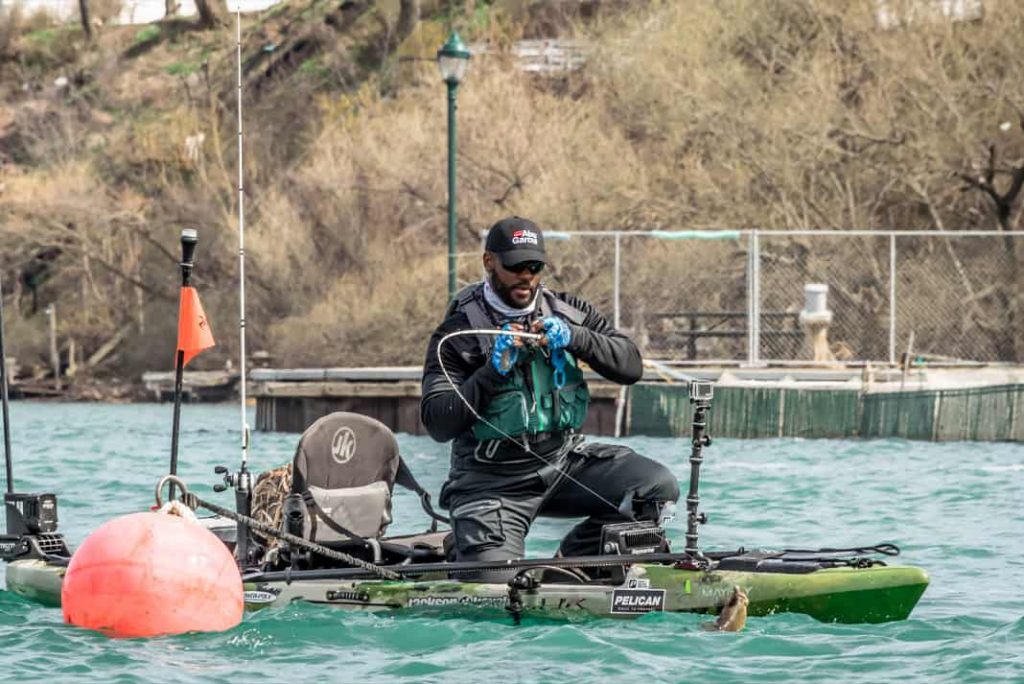
Eron Dodds
Renfrew, Ontario // Largemouth Bass
“My heart is in paddling,” declares Eron Dodds (ED). The tournament pro and organizer grew up in canoes and turned to the kayak to reach isolated lakes and ponds. In addition to unrestricted access, Dodds enjoys the physical aspect of paddling. “It’s a great workout.”
Joey Monteleone
Rock Island, Tennessee // Largemouth Bass
Over 50 years logging over 42,000 bass with more than 1,400 over five pounds, Joey Monteleone (JM) still prefers paddling to the fish. A TV host, outdoor writer, radio personality and Tennessee Outdoorsman of the Year, he gets a kick out of getting close to the action. “I’ve caught fish that were right beside the boat,” he marvels.
Justin Powell
Atlanta, Georgia // Trout
Rivers and flies run through Justin Powell’s (JP) blood. The professional guide and Orvis pro chooses a paddle kayak for its advantages when slinging miles of fly line. “When the river level is too low for drift boats, I’m still fishing,” he remarks.
6 Anglers On Why They Love Paddle Fishing
Why paddle?
JD: Paddling is how I came to love kayak fishing. I didn’t have a pedal kayak when I first hit the water as a teen. I just grabbed any boat and went fishing. Paddling is quiet. I can hear nature’s voice. Animals are playing because they don’t know I’m there. Most of all, I can close the gap on shallow fish. With the paddle, I can go places boaters and even pedal anglers can’t access. Fishermen need to learn patience, and paddling teaches me to slow down and cover an area.
BS: The estuaries surrounding St. Augustine have a seven-foot tide range. The water will be four-foot-deep and a few hours later the same area will be dry. Using a paddle lets me glide over the shallows and slide up on spooky fish. During extreme high-tides, I can follow fish deep into the marsh. In shallow, tight water, the paddle is more efficient. And, I enjoy paddling. I love feeling the blade pull through the water and the boat gliding effortlessly.
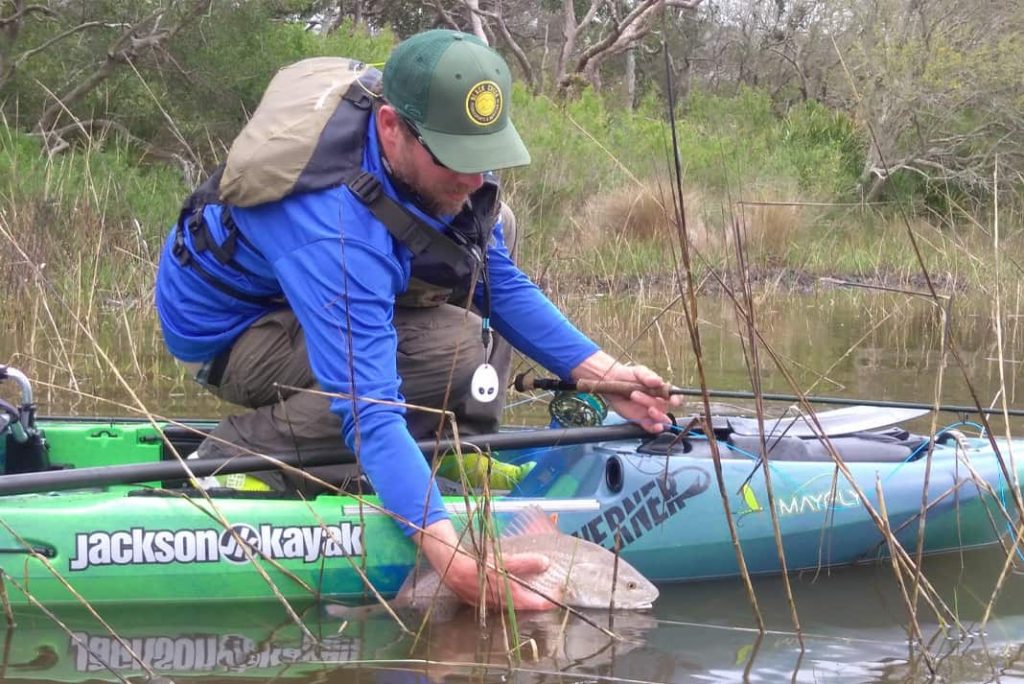
RB: I like how the entire body, from hands to feet, is engaged in moving the boat through the water. A good paddler can maneuver in ways a pedal kayak could never achieve. I remember the first time I was passed by Ocean Kayak pro Rob Choi. The experience inspired me to work on my paddling skills. Knowing proper paddling techniques can be an advantage when fishing around bridge pilings and tight spots requiring slight changes in position. Pedal fishing has its place, such as battling strong current or holding position while bottom fishing, but paddling is more fun.
ED: I grew up paddling canoes, so it’s natural to me. I like the workout. Paddling is one of my passions. Even if paddling restricts my range, it’s much quieter for sneaking up on shallow-water bass.
JM: Paddling gives me a chance to stay fit and maintain my core strength. I’ve fished out of every conceivable boat and I choose a kayak for the simple unobtrusiveness. The kayak takes me to serene places. I’ve tried pedal drives; they’re not for me. I’m a purist at heart. I like the simplicity.
JP: I like the quiet, no engine, being able to cover water under “me-power.” A paddle kayak fits better in my grab-and-go fishing. I trade speed and range for maneuverability. The kayak offers a shallow-water advantage; I wouldn’t want to trade that for propeller or fins. On the rivers I can fish low water when drift boats are stuck. As a fly angler, I do most of my fishing standing in the kayak. Pedals get in the way of standing and fishing.
What do you look for in a boat?
JD: The Jackson Kayak Mayfly is my primary fishing kayak. The layout is perfect for my style of fishing. It has a wide open, snag free platform allowing me to stand and fish without having to worry about space or stability. And I can fly fish from it with plenty of storage for my fly gear. The boat has a longer waterline for more speed and better tracking.
BS: I’ve been using the Jackson Kayak Kraken 13.5. I like the long, streamlined design for easy paddling and tracking. Every inch of the boat is designed for efficiency.
RB: For an all-around boat, the Old Town Predator 13 is comfortable as an SUV, with the speed of a sports car and tracking like a dragster. It’s a perfect combination of comfort and performance. The high-low seat is in the high position while I’m fishing, then I drop it in the low position for better paddling. For open water, I usually use an Ocean Kayak Trident 13. One time, just to test the Predator’s capabilities, I took it out in the Gulf on a sporty day. The boat did great and I had one of my best days on king mackerel.
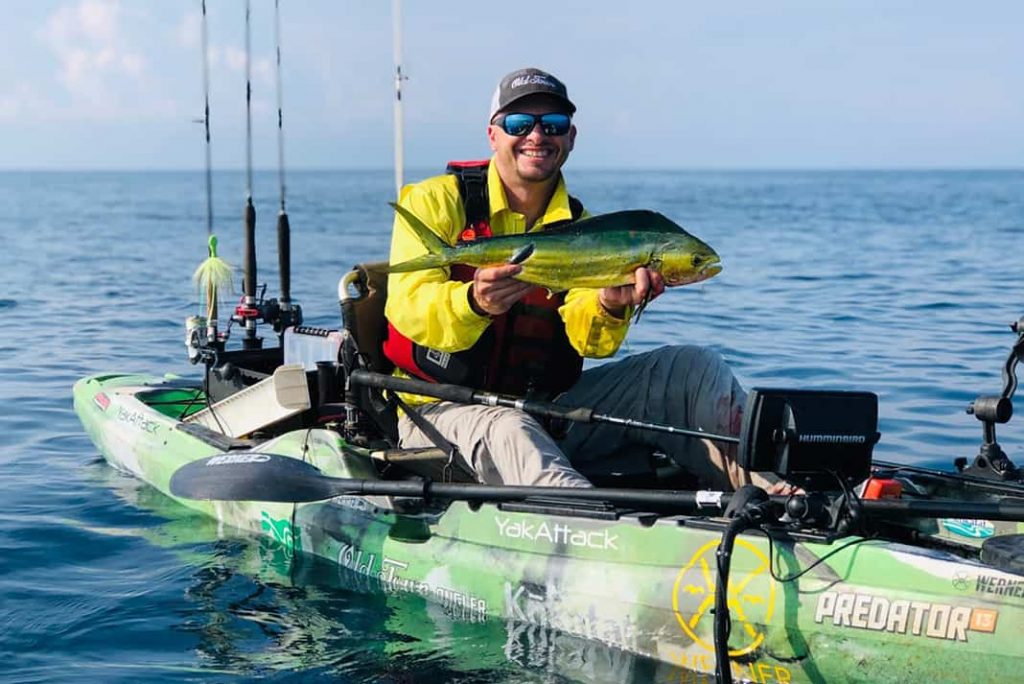
ED: Look for a boat with a narrow beam and longer waterline for all-around paddling in open water or even rivers. Hull design has a huge affect on paddling performance. A wider kayak is good for standup fishing, but cuts down on speed and maneuverability. Sitting lower to the water improves speed and power while cutting through the wind.
JM: There is a boat for everyone. Try out different models, as well as paddles and life jackets. Hull design and cockpit layout contribute to comfort and safety on a paddle kayak. Assemble your own system. Don’t imitate anyone. The parts come together for a more enjoyable experience on the water.
JP: I choose a kayak with the least amount of deck rigging to snag the line. The Jackson Kayak Mayfly replaces foot-pegs mounted on the side of the foot well with a single brace mounted on a track in the deck. The boat should be 35 inches wide with a tunnel hull for ultimate stability. I like a longer, 13-foot waterline to improve tracking while I’m stand up paddling. Even the fish finder mount and transducer scupper are placed out of the way to avoid snagging my fly line.
Describe the best paddle
JD: I most often grab the Werner Shuna Hooked with fiberglass blades and a carbon shaft. The shaft is light and the blades are tough for pushing through muddy shallows. The most important feature is the paddle is adjustable. I can use it on more than one boat and dial in the length for the best fit.
BS: I choose a high-angle paddle if I’m on a higher sit-on-top with an elevated frame seat. If I’m sitting lower in the water in a performance position, I go with a low-angle blade. A few years ago, I was experiencing pain in elbows and wrists. I tried a bent shaft paddle for a season and couldn’t believe the difference. The bent shaft is my go-to when I’m paddling a higher, heavier kayak.
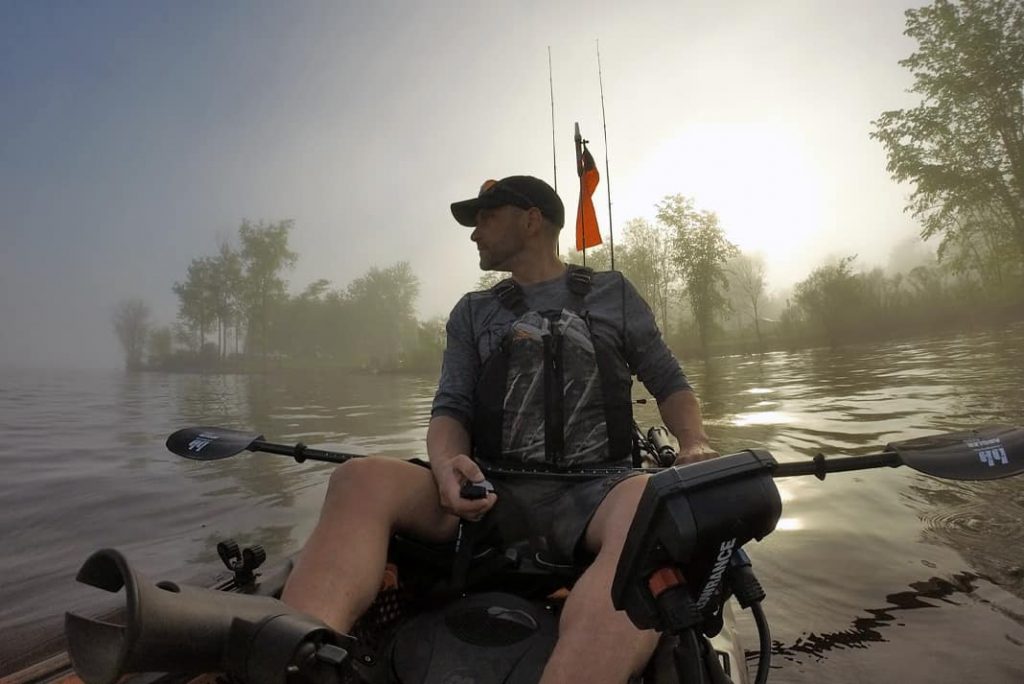
RB: I look for a lightweight, high-performance paddle like Werner’s Cyprus Hooked. In my opinion a good paddle has zero flex. It should paddle like a single-piece shaft. Any flex in the paddle consumes energy that should be going to push the boat through the water.
ED: I use Bending Branches’ Angler Pro Carbon because it is super light and increases my distance. Every ounce adds up over miles of paddling. Weight at the end of the paddle is heavier to turn. Go for the lightest blades for an easier stroke.
JM: My Bending Branches Angler Pro Carbon is lighter than most of the fish I catch! As a Baby Boomer, I’m looking for lightweight equipment I can use all day, every day. Even though the Angler Pro Carbon is light, it’s tough. I fish rocky rivers and the carbon fiber paddle gets me there and back.
JP: For river fishing and stand up paddling I go with Bending Branches’ Angler Navigator with carbon fiber shaft and wood laminate blades. I love the feel and look of wood. The tip and edges of the blades are reinforced with a protective layer allowing the wood to act like a shock absorber when I push off rocks. The carbon fiber shaft is light to further reduce fatigue.
Offer a tip for better paddling
JD: Remember to twist at the waist through the paddle stroke to engage upper body strength and not just rely on the arms. Be sure the blade is completely submerged on each stroke to get the most power.
BS: When I started kayak fishing, I didn’t take time to learn to paddle. Years later, after I started guiding, I took a course with the American Canoe Association. Now I work on my form and techniques every trip. It’s part of the fun.
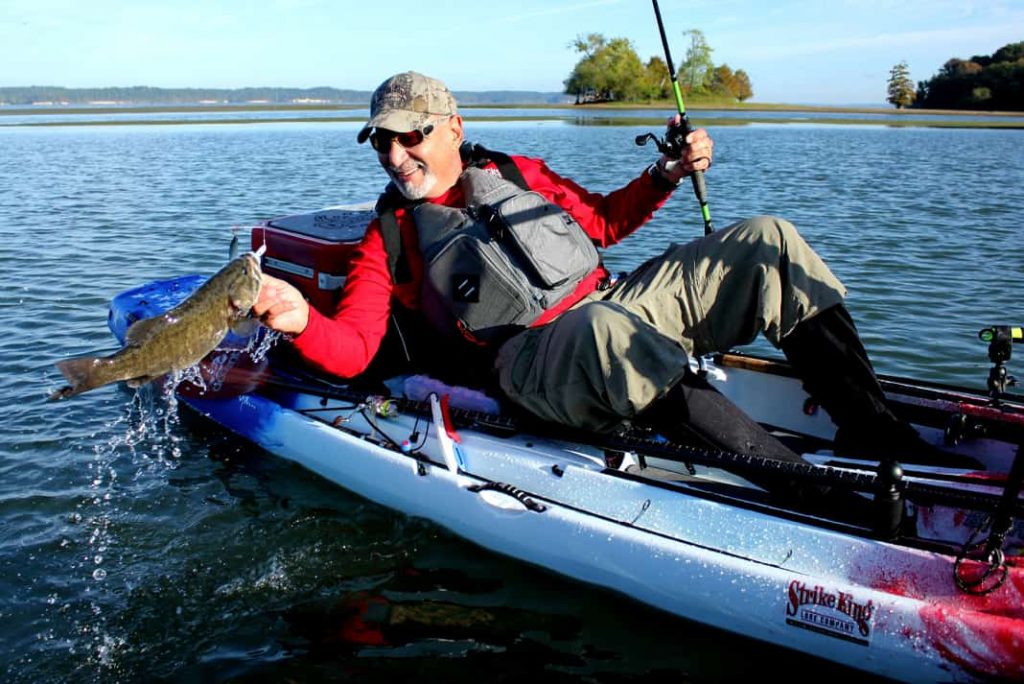
RB: In a chaotic moment, the paddle can get in the way. It’s best to have several paddle holders for more options to stick the paddle.
ED: Don’t horse the kayak. Use a smooth, consistent stroke. Rhythm is the heart of paddling. Pace yourself. A GPS will monitor paddling speed to keep you from over exerting yourself.
JM: Consider the amount of gear and cut extra weight. Every ounce is an ounce I have to pull around. Weight isn’t as big a concern with pedal kayaks. I cut my tackle down to two or three trays with everything I need for the day. I only take three rods and formulate my plan. I don’t add a bunch of accessories, either.
JP: One of the advantages of paddling for river fishing is being able to hold and change position in the current. I adopted the technique from drift boat fishing: Point the bow of the kayak upstream, then make slight adjustment strokes to change position or slow drift.
Tell a paddle-fishing story
JD: In the summer, I love to fish for bass under heavy cover. Some of the areas the vegetation is so thick it’s more efficient to stand and paddle like a paddleboard. I can push off the mats of grass and glide overtop.
BS: The only way to access the network of canals crisscrossing South St. Augustine to Dayton is by paddle kayak. The water is never more than six inches deep and the tight waterways and low bridges prohibit a pedal kayak. In the winter, upper-slot redfish move into the canals. I’ve had some of my best sight-fishing where no other boat can go.
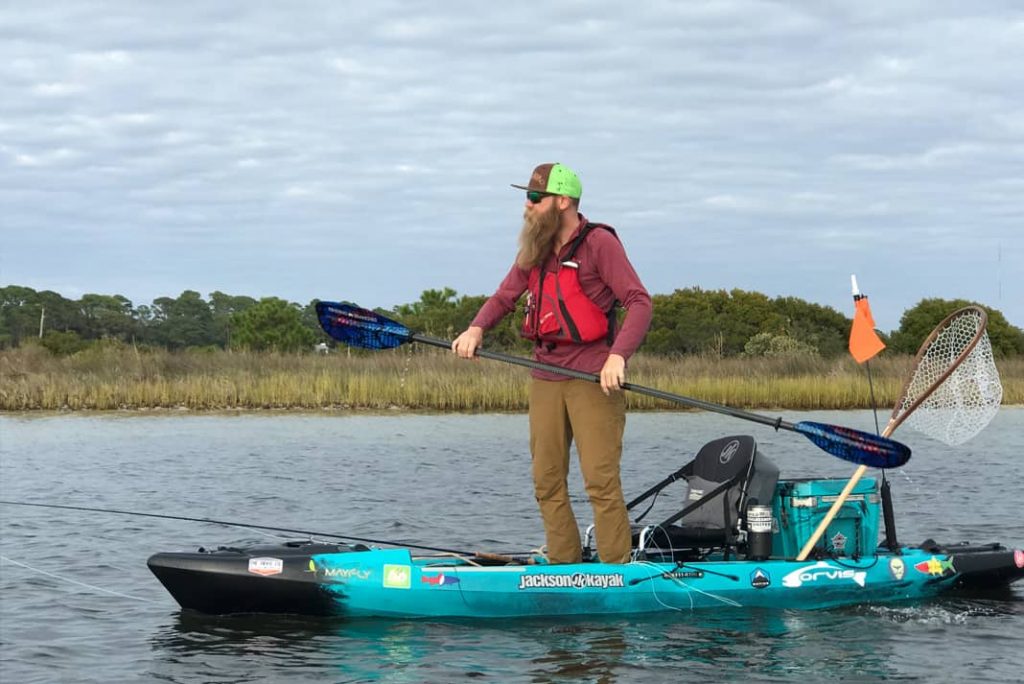
JM: I was at a pro staff outing with a bunch of boat anglers. The boat guys were joking me about racing back to the launch. I accepted the challenge then chose a route cutting behind a marina through a four-foot-wide opening. The cameraman filmed me catching four bass in a space no bass boat could fit.
JP: I started kayak fishing in northwest Florida targeting redfish and trout feeding under dock lights at night. The fish would spook easily, even with the slight hum of an electric trolling motor. Paddling a kayak allowed me to maneuver into casting range and silently creep up on the fish. Once I was accustomed to the simplicity and adaptability of a paddle kayak it was impossible to get in a pedal kayak for shallow, tight-water fishing.
This article was first published in the Fall 2019 issue of Kayak Angler. Subscribe to Kayak Angler Magazine’s print and digital editions, or browse the archives.
“Paddling teaches me to slow down and cover an area,” says John Deshauteurs. | Feature photo: Dante Gramuglia
